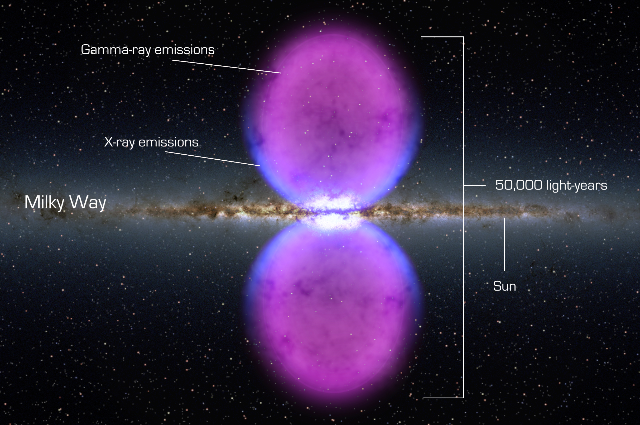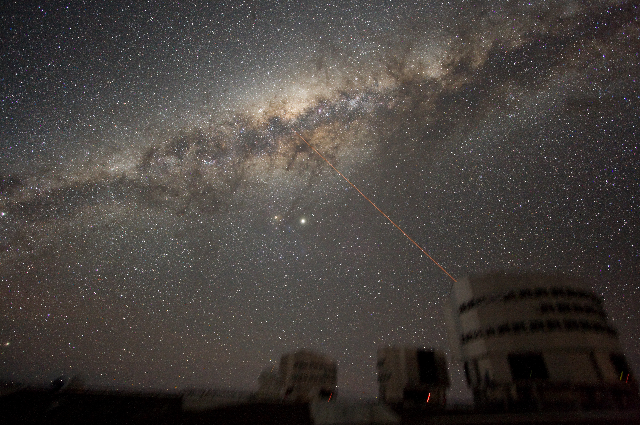UNVEILING MYSTERIES OF OUR GALACTIC HOME
The Milky Way Galaxy, a vast and complex structure that is home to our Solar System, has been a subject of human curiosity and wonder for centuries. Stretching across the night sky, this barred spiral galaxy contains billions of stars, planets, and other celestial objects, each contributing to the dynamic and intricate nature of our cosmic neighbourhood. From the supermassive black hole at its centre to the potential for life on distant exoplanets, the Milky Way offers an abundance of phenomena that continue to captivate astronomers and scientists alike.
At the heart of the Milky Way lies Sagittarius A* (pronounced "Sagittarius A-star"), a supermassive black hole with a mass of about 4.3 million times that of our Sun. Located approximately 26,000 light-years from Earth in the constellation Sagittarius, this black hole exerts a powerful gravitational influence on the stars and matter in its vicinity. Despite its immense mass, Sagittarius A* is relatively small in size, with an event horizon that spans about 24 million kilometres. Observations of stars orbiting close to this black hole have provided critical evidence of its existence and have allowed astronomers to study the extreme physics governing such environments.
The structure of the Milky Way is equally fascinating. As a barred spiral galaxy, it features a central bar-shaped region composed of stars, from which several spiral arms extend outward. These arms, such as the Orion Arm where our Solar System is located, are sites of active star formation, filled with regions known as nebulae. Nebulae are vast clouds of gas and dust, such as the famous Orion Nebula, where new stars are born. The intricate dance of gravitational forces, star formation, and stellar evolution within these spiral arms contributes to the ever-changing face of our galaxy.
One of the most compelling aspects of the Milky Way is its sheer scale. Spanning about 100,000 light-years in diameter, it contains an estimated 100 billion to 400 billion stars. This vast collection of stars is accompanied by planets, moons, asteroids, comets, and other celestial bodies, each following their own unique trajectories. Our Solar System, situated about 27,000 light-years from the galactic centre, takes approximately 230 million years to complete one orbit around the Milky Way. This orbital period, known as a galactic year, places the age of our Solar System at roughly 20 galactic years.
Surrounding the Milky Way is the galactic halo, a spherical region composed of hot gas, dark matter, and globular clusters—dense groupings of ancient stars. The halo extends far beyond the visible parts of the galaxy and contains some of the oldest known stars, providing valuable insights into the early stages of galactic formation and evolution. Dark matter, which makes up a significant portion of the Milky Way’s mass, remains one of the most profound mysteries in astrophysics. Although it does not emit light and is invisible to current instruments, its presence is inferred through its gravitational effects on visible matter.
The Milky Way is not a solitary entity in space. It is accompanied by several smaller satellite galaxies, such as the Large and Small Magellanic Clouds, which are visible from the Southern Hemisphere. These satellite galaxies, along with numerous dwarf galaxies, interact gravitationally with the Milky Way, contributing to the exchange of stars and gas. Such interactions play a crucial role in the ongoing evolution of galaxies, influencing their shapes, star formation rates, and overall dynamics.
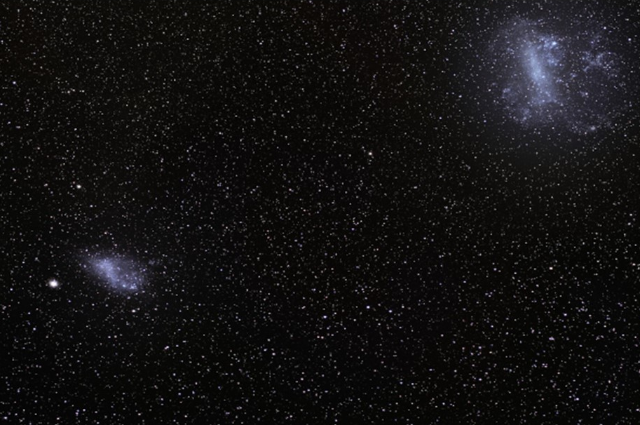
Looking beyond the Milky Way, we find that it is part of the Local Group, a collection of over 50 galaxies, including the Andromeda Galaxy and the Triangulum Galaxy. The Milky Way and Andromeda, the two largest members of this group, are on a collision course. In approximately 4.5 billion years, the two galaxies are expected to merge, forming a new galaxy often referred to as "Milkomeda." This galactic collision will trigger bursts of star formation and drastically reshape the structure of both galaxies, creating a new cosmic landscape.
While the physical properties and dynamics of the Milky Way are awe-inspiring, the potential for life within our galaxy adds another layer of intrigue. The discovery of exoplanets—planets orbiting stars outside our Solar System—has revealed that many stars host planetary systems. Some of these exoplanets lie within their star’s habitable zone, where conditions might be right for liquid water to exist. The search for extra-terrestrial life focuses on these potentially habitable exoplanets, employing techniques such as the transit method and radial velocity method to detect and study them. Missions like the Kepler Space Telescope and the James Webb Space Telescope aim to identify and characterize these distant worlds, bringing us closer to answering the age-old question of whether we are alone in the universe.

James Web telescope/ Photo from Wikipedia
Technological advancements have revolutionized our understanding of the Milky Way. Telescopes operating across the electromagnetic spectrum—from radio waves to gamma rays—have unveiled the galaxy’s hidden features and processes. Instruments like the Hubble Space Telescope have provided stunning images of star-forming regions, while radio telescopes have mapped the distribution of neutral hydrogen gas, revealing the spiral structure of the Milky Way. Future observatories, such as the Extremely Large Telescope (ELT) and the Square Kilometre Array (SKA), promise to further expand our knowledge and push the boundaries of astrophysical research.
One particularly flabbergasting aspect of our galaxy is the sheer number of potentially habitable exoplanets. With billions of stars in the Milky Way, it is statistically likely that there are numerous planets with conditions suitable for life. The discovery of Earth-like planets in the habitable zones of their parent stars has sparked a surge of interest and speculation about the possibility of finding life beyond our planet. This quest to uncover life on other worlds is one of the most exciting and profound endeavours in science, offering the potential to transform our understanding of life and the universe.
The galactic halo of the Milky Way is another intriguing feature. This vast, spherical region surrounds the galaxy and is composed of hot gas, dark matter, and ancient globular clusters—dense groupings of old stars. The halo extends far beyond the visible parts of the galaxy and contains some of the oldest known stars, providing valuable insights into the early stages of galactic formation and evolution. Studying the halo helps astronomers understand the Milky Way’s history and the processes that have shaped it over billions of years.
Another fascinating aspect is the presence of rogue planets—planets that do not orbit a star but instead drift through interstellar space. These planets are thought to have been ejected from their original planetary systems by gravitational interactions. The existence of rogue planets challenges traditional notions of planetary formation and stability, offering new avenues for research and discovery.
Another captivating phenomenon within our galaxy is the process of star formation. Stars are born in giant molecular clouds, regions of space filled with cold gas and dust. Under the influence of gravity, these clouds collapse to form protostars, which eventually ignite nuclear fusion in their cores and become fully-fledged stars. The process of star formation is not only vital for understanding the lifecycle of stars but also for comprehending the evolution of galaxies as a whole.
Supernovae, the explosive deaths of massive stars, are also a critical and fascinating aspect of the Milky Way. These cataclysmic events release an enormous amount of energy and are responsible for creating and dispersing heavy elements like iron and gold throughout the galaxy. Supernovae play a crucial role in enriching the interstellar medium and triggering the formation of new stars, thereby driving the cycle of matter in the galaxy.
The study of the Milky Way also includes understanding the various types of stars that populate our galaxy. From massive blue giants to diminutive red dwarfs, the diversity of stellar types provides a window into the different stages of stellar evolution. Red dwarf stars, which are the most common type of star in the Milky Way, have particularly long lifespans, potentially lasting for trillions of years. This longevity makes them interesting targets in the search for habitable exoplanets.
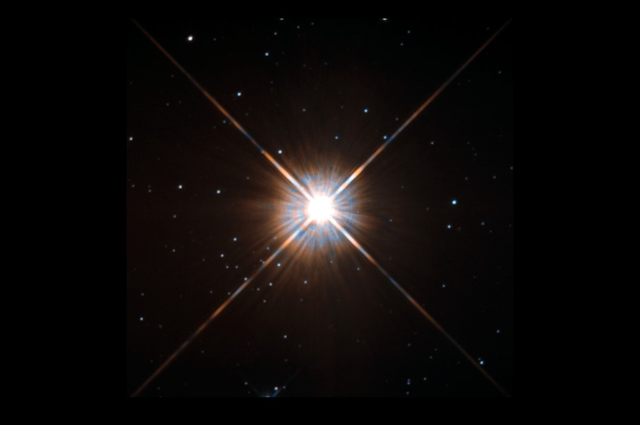
In addition to stars, the Milky Way is home to a variety of other celestial phenomena, including pulsars and magnetars. Pulsars are highly magnetized, rotating neutron stars that emit beams of electromagnetic radiation. These beams sweep across space like lighthouse beacons, making pulsars appear to pulse when observed from Earth. Magnetars, on the other hand, are a type of neutron star with an extremely strong magnetic field, capable of producing intense bursts of X-rays and gamma rays.
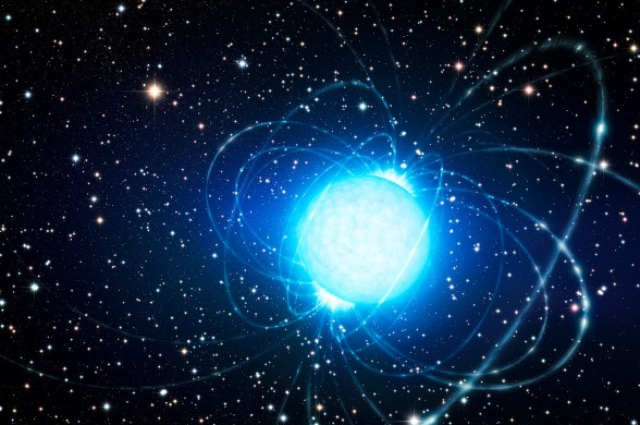
Our galaxy also hosts some of the most remarkable cosmic structures, such as the Fermi Bubbles. These enormous, balloon-like regions of high-energy gas extend above and below the Milky Way’s disk and are thought to be the remnants of an ancient, massive eruption from the central black hole, Sagittarius A. The Fermi Bubbles span tens of thousands of light-years and their origins and implications are still a topic of active research.
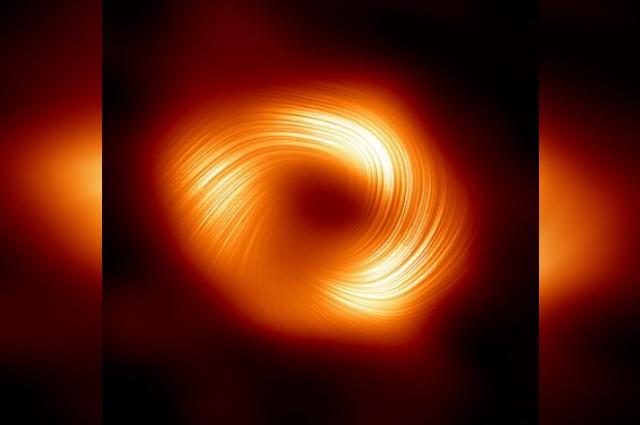
Another enigmatic feature of the Milky Way is the stellar streams—rivers of stars that stretch across the sky. These streams are remnants of smaller galaxies and star clusters that have been torn apart and assimilated by the Milky Way’s gravitational forces. Studying these stellar streams provides insight into the history of galactic mergers and the structure of the Milky Way’s dark matter halo.
The existence of the Galactic Habitable Zone (GHZ) is another intriguing concept. The GHZ is a region in the galaxy where conditions are thought to be favourable for the development of complex life. It is located at a certain distance from the galactic centre, where the frequency of life-threatening events like supernovae is lower, and where there is a sufficient abundance of heavy elements needed for the formation of terrestrial planets. Understanding the GHZ can help guide the search for extra-terrestrial life.
The concept of the galactic year—our Solar System's orbit around the Milky Way—also adds an intriguing dimension to our understanding of time on a cosmic scale. A single galactic year, taking about 230 million Earth years to complete, contextualizes the history of our planet within the broader timeline of the galaxy. For instance, the last time our Solar System was in its current position in the galaxy, dinosaurs roamed the Earth.
The Milky Way’s interaction with cosmic rays is another captivating subject. Cosmic rays are high-energy particles that travel through space and occasionally collide with atoms in Earth's atmosphere. These interactions can create showers of secondary particles, contributing to phenomena like auroras. The sources of cosmic rays include supernovae and active galactic nuclei, making them valuable probes for studying high-energy processes in the galaxy.
Our understanding of the Milky Way has been profoundly shaped by advances in technology and instrumentation. The Gaia spacecraft, launched by the European Space Agency, is creating the most precise 3D map of the Milky Way to date, charting the positions and motions of over a billion stars. This data is revolutionizing our understanding of the galaxy's structure, formation history, and future evolution.
Another fascinating aspect is the Milky Way’s role as a cosmic archaeologist. By studying different populations of stars—some of which are billions of years old—astronomers can piece together the history of the galaxy. For example, the discovery of ancient stars in the galactic halo suggests that the Milky Way has undergone several mergers with smaller galaxies throughout its history. These ancient stars serve as time capsules, preserving the conditions and processes from the early universe.
The study of star clusters within the Milky Way offers another avenue for understanding stellar evolution and galactic dynamics. Globular clusters, which are densely packed groups of old stars, orbit the galactic centre and provide insights into the conditions of the early Milky Way. Conversely, open clusters are younger and more loosely bound groups of stars found in the galactic disk. Their study helps astronomers understand the processes of star formation and the evolution of star systems.
The presence of interstellar dust and its role in the galaxy is yet another intriguing topic. Interstellar dust, composed of tiny solid particles, absorbs and scatters light, affecting the visibility of celestial objects and contributing to the formation of new stars and planets. Dust plays a crucial role in the chemistry of the galaxy, serving as a catalyst for the formation of complex molecules, including those that are the building blocks of life.
One cannot discuss the Milky Way without mentioning the enigmatic phenomenon of gamma-ray bursts (GRBs). These extremely energetic explosions, believed to result from the collapse of massive stars or the merging of neutron stars, release more energy in a few seconds than the Sun will emit over its entire lifetime. While most GRBs are observed in distant galaxies, their study provides crucial information about the most extreme environments and processes in the universe.
The discovery of the Oort Cloud, a hypothesized spherical shell of icy bodies surrounding the Solar System, suggests that our system is not isolated but is embedded within a larger structure influenced by the galaxy’s gravitational forces. The Oort Cloud is thought to be the source of long-period comets that occasionally enter the inner Solar System, providing a link between our local cosmic neighbourhood and the broader galaxy.
The concept of the galactic habitable zone (GHZ) is another intriguing aspect of the Milky Way. The GHZ is a region in the galaxy where conditions are thought to be most favourable for the development of complex life. Located at a certain distance from the galactic centre, the GHZ has a relatively low frequency of life-threatening events like supernovae and a sufficient abundance of heavy elements needed for the formation of terrestrial planets. Understanding the GHZ helps guide the search for extra-terrestrial life and offers insights into the potential distribution of life in the galaxy.
Our understanding of the Milky Way’s dynamics is further enhanced by the study of variable stars. These stars, whose brightness changes over time, serve as important tools for measuring cosmic distances. The period-luminosity relationship of Cepheid variable stars, for instance, allows astronomers to determine their distances with great accuracy, contributing to the mapping of the galaxy's structure and the calibration of the cosmic distance scale.
The study of the Milky Way also involves exploring the interplay between its various components. The interplay between the galactic disk, halo, and bulge, along with the interactions between stars, gas, and dark matter, creates a complex and dynamic system. Understanding these interactions is crucial for unravelling the processes that drive the evolution of the galaxy.
The presence of stellar nurseries, regions where new stars are born, adds another layer of fascination. These nurseries, such as the Pillars of Creation in the Eagle Nebula, showcase the beauty and complexity of star formation. Observations of these regions provide insights into the initial conditions of star birth and the influence of environmental factors on the formation of stellar systems.
In addition to stars, the Milky Way hosts a variety of other celestial phenomena, including black holes and neutron stars. Black holes, formed from the remnants of massive stars, exert such strong gravitational forces that not even light can escape their pull. Neutron stars, on the other hand, are incredibly dense remnants of supernova explosions. These objects offer unique opportunities to study the extremes of physics and the behaviour of matter under extreme conditions.
The study of the Milky Way’s magnetic field is another intriguing area of research. The galactic magnetic field influences the behaviour of cosmic rays and plays a role in the dynamics of the interstellar medium. Understanding the structure and strength of the Milky Way’s magnetic field is crucial for developing a comprehensive picture of the galaxy’s physical processes.
The concept of galactic archaeology also comes into play when studying the chemical composition of stars. By analysing the spectra of stars, astronomers can determine their chemical abundances and trace the history of element formation in the galaxy. This field of study, known as galactic chemical evolution, helps us understand the processes that have enriched the galaxy with heavy elements over billions of years.
The discovery of exoplanets within the Milky Way has revolutionized our understanding of planetary systems. The sheer diversity of exoplanets, ranging from hot Jupiters to Earth-like worlds, challenges traditional notions of planet formation and offers new insights into the potential for life elsewhere in the galaxy. The study of exoplanets also provides valuable information about the formation and evolution of planetary systems, including our own.
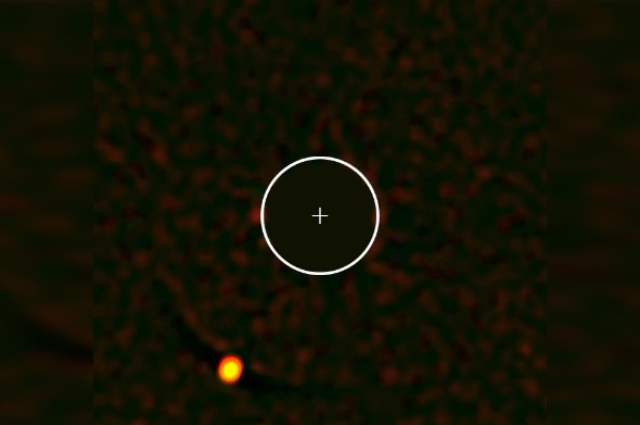
The Milky Way’s position within the Local Group of galaxies offers a unique perspective on galaxy interactions and the large-scale structure of the universe. The Local Group is dominated by the Milky Way and the Andromeda Galaxy, which are on a collision course. This future galactic merger will have profound effects on both galaxies, including the formation of new stars and the redistribution of stellar populations.
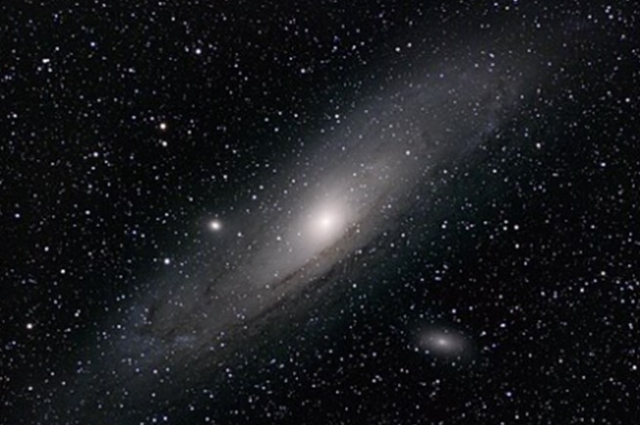
The search for extra-terrestrial intelligence (SETI) within the Milky Way is another captivating aspect of our galaxy. SETI researchers use radio telescopes to scan the sky for signals that might indicate the presence of intelligent civilizations. While no definitive signals have been detected so far, the search continues, driven by the possibility that we might one day make contact with other intelligent beings in the galaxy.
One of the most mysterious aspects of the Milky Way is the presence of fast radio bursts (FRBs). These extremely short and intense bursts of radio waves originate from distant galaxies, but their exact nature and origins remain unknown. FRBs are a relatively recent discovery and have sparked significant interest and research, offering the potential to uncover new and unexpected astrophysical phenomena.
In conclusion, the Milky Way Galaxy is a magnificent and complex system, teeming with stars, planets, and other celestial phenomena. From the enigmatic supermassive black hole at its centre to the potential for life on distant exoplanets, our galaxy presents a wealth of mysteries and wonders waiting to be explored. As technology advances and our observational capabilities improve, we continue to uncover new insights into the nature of the Milky Way, deepening our appreciation for the vast and dynamic universe we inhabit. The study of our galaxy not only satisfies our curiosity about the cosmos but also helps us understand our place within it, inspiring awe and wonder for generations to come. The Milky Way is not just our home; it is a vast frontier that beckons us to explore, to discover, and to dream.

